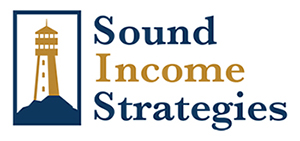[media-downloader media_id=”3735″ texts=”Download PDF” class=”cherry-btn”]
| Index | Month / Year to Date |
| Dow Jones | +1.96% / +8.72% |
| S&P 500 | +0.56% / +10.46% |
| NASDAQ | -0.70% / +17.42% |
| 10-Yr Treasury | +2.86% / +3.06% |
Markets
September may have marked the start of fall, but for the financial markets it was a month in which everything seemed to rise. On September 20th, the Dow Jones Industrial Average finally managed to surpass the peak it hit in January and nudged all the way to a new record of 26,743 one day later before leveling off again. On September 18th, the yield on the 10-year Treasury rate surpassed 3 percent for the first time since May, making it to 3.10 percent before dropping slightly again.* Finally, on September 26th, the Federal Reserve raised short-term interest rates for the third time this year, to a range of 2-to-2.25 percent. It also reaffirmed its plan for one more rate hike in December, and as many as three more in 2019.**
What does it all mean? Well, for the stock market, September’s performance was basically a continuation of the mostly upward trend the market enjoyed all summer. After five months of extreme volatility driven by fears about inflation and the potential impact of the Trump administration’s tough trade policies, Wall Street seemed to calm down and focus (for the time being) on a slew of mostly positive economic data, including 4.2 percent second-quarter GDP growth.
As for rising interest rates and what they mean for the bond market, you may already have heard some pundits express concern about a “bursting of the bond bubble.” This happens every time rates rise since—as everyone knows—rising rates can create a headwind for bond investors. Regular readers know, however, that I believe the very term “bond bubble” is misleading and technically inaccurate, and often used simply as a scare tactic by advisors who either know little about how the bond market works or have a fiscal interest in steering investors away from it in favor of the stock market.
Yes, rising interest rates can sometimes create a headwind for bond portfolios, but it’s not the only factor that effects bond values. What’s more, I still believe long-term rates are going to continue hitting a strong resistance level at just below and above the 3 percent mark, as they have all year so far, for several reasons. While this resistance and limited fluctuation just above and below 3 percent presents a challenge for the Fed’s plan to continue raising short-term rates, it can also create good opportunities for active management income specialists to upgrade clients’ portfolios.
Portfolio Transactions:
When managing your portfolio at SIS, we look for one of four possible “enhancement” trades while reviewing securities and possible transactions. Income generation is our primary goal for our clients, and we consider the following four portfolio enhancements before performing a transaction: current yield, yield to worst (minimum projected annualized total return), interest rate risk, and default risk. The intents of these transactions are categorized as follows:
- Pay Me Now – Enhancing current yield
- Pay Me Later – Enhancing yield to worst
- Cover My Assets I. – Managing interest rate risk
- Cover My Assets II. – Managing default risk
We evaluate the transactions by determining whether they meet one, two, three, or all four enhancements. A baseball analogy for this: SINGLES, DOUBLES, TRIPLES, and HOME RUNS.
*Y-Charts.com
**“Fed Raises Interest Rates and Signals its ‘Accommodative’ Era is Over,” Yahoo Finance, Sept. 26, 2018
*Note: The above trades were recent block trades and do not reflect all trades done on an individual specific basis. Sound Income Strategies, LLC is a registered investment advisor. Information presented is for educational purposes only and does not intend to make an offer or solicitation for the sale or purchase of any specific securities, investments, or investment strategies. Investments involve risk and, unless otherwise stated, are not guaranteed. Past performance is not an indication of future results. Be sure to first consult with a qualified financial advisor or tax professional about your specific financial situation before implementing any strategy discussed herein.
You are advised to give independent consideration to, and conduct independent investigation with regards to, the information above in accordance with your individual investment objectives. Use of the Information is at the reader’s risk, is strictly intended for informational purposes in conjunction with the recipient’s due diligence, and should not be construed as a solicitation by Sound Income Strategies, LLC. Past performance will never indicate or guarantee future behavior. Sound Income Strategies, LLC does not represent or warrant that the contents of the document are suitable for you from compliance, regulatory, legal, or any other perspective. We shall have no responsibility or liability for your use or non-use of the document or any portion thereof. Sound Income Strategies, LLC is registered as an investment advisor under the Investment Advisors Act of 1940 and is regulated by the SEC. Sound Income Strategies, LLC and its affiliates may only transact business or render personalized investment advice in those states and jurisdictions where we are registered or otherwise qualified to do so.
